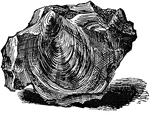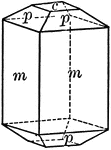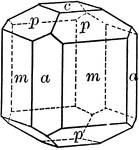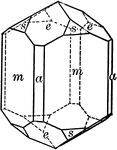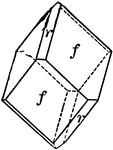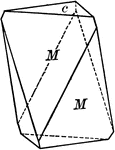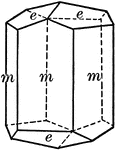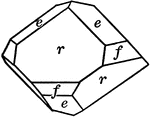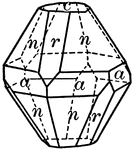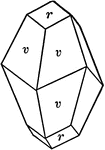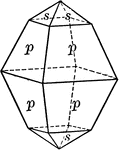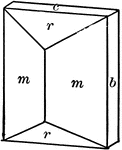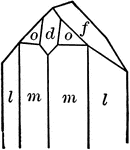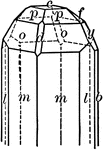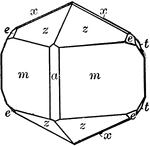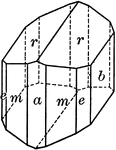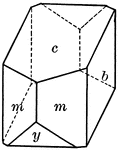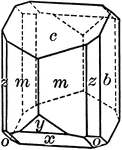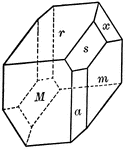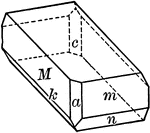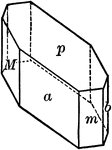
Agate
"A variety of quartz which is peculiar in consisting of bands or layers of various colors blended together."-Whitney,…

George Armstrong Custer
"George Armstrong Custer, a brilliant cavalry officer, was born at New Rumley, Ohio, December 5, 1839.…

Softened fibula
"The Fibula tied into a Knot after the Mineral Matter has been dissolved by Acid." — Blaisedell,…

Bean Plant in Jar
"The bean with its roots in unboiled water will grow for a considerable time, as long as the mineral…
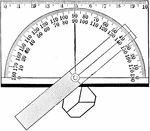
Contact Goniometer
"An important part of the study of crystallography consists in the measuring and classifying of the…

Scapolite
"A crystal of scapolite, upon which the faces of the third-order pyramid are shown." — Ford, 1912

Apatite
"A complex crystal of apatite with the faces of a third-order pyramid upon it." — Ford, 1912

Scalenohedron
"This form consists of twelve scalene triangular faces. These faces correspond in their position to…

Tourmaline
"Tourmaline crystals show the forms of the Rhombohedral Class but with hemispherical development. They…
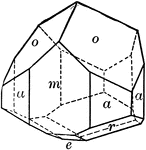
Tourmaline
"Tourmaline crystals show the forms of the Rhombohedral Class but with hemispherical development. They…

Tourmaline
"Tourmaline crystals show the forms of the Rhombohedral Class but with hemispherical development. They…

Right-handed quartz
"The quartz crystals are said to be right or left handed, depending upon whether these faces are to…

Calamine
"The only orthorhombic mineral of importance belonging to the hemimorphic class is calamine. When its…
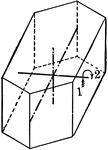
Symmetry of monoclinic system
"The symmetry of the Monoclinic System is as follows: The crystallographic axis b is an axis of binary…

Chemical balance
"The most accurate method of determining the specific gravity of a mineral is by the use of a chemical…
